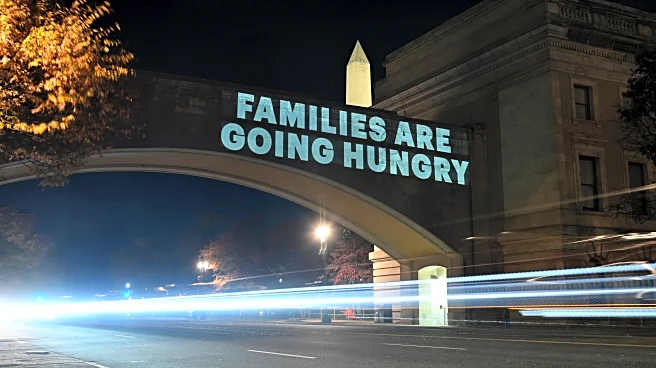What's Happening?
Bipartisan discussions in the Senate are showing signs of progress towards ending the ongoing government shutdown, which is on the verge of becoming the longest in U.S. history. Senate Majority Leader John Thune expressed optimism about reaching a solution,
while acknowledging the pressures faced by lawmakers. The potential deal involves a 'minibus' package of full-year appropriations bills, alongside a continuing resolution to fund the government temporarily. This package would include funding for military construction, the Department of Veterans Affairs, the legislative branch, and the FDA and Department of Agriculture. However, Republicans need to secure additional Democratic support to pass the short-term funding measure. The proposal also includes a vote on extending health care tax credits, a key Democratic demand.
Why It's Important?
The resolution of the government shutdown is crucial for maintaining government operations and services. The shutdown has significant implications for federal employees, government contractors, and the broader economy. A prolonged shutdown could disrupt various sectors, including defense, agriculture, and public health, due to halted funding. The bipartisan effort to pass a 'minibus' package reflects a desire to return to regular order in the appropriations process, potentially avoiding a massive year-end funding bill. The outcome of these negotiations will impact political dynamics, as both parties navigate the pressures of upcoming elections and public opinion.
What's Next?
If the Senate reaches an agreement, the next step would involve securing enough votes to pass the proposed funding measures. The deadline for the continuing resolution is set for November 21, leaving limited time for appropriators to finalize full-year funding. Discussions on extending the deadline to December are ongoing, with some lawmakers advocating for this to increase the chances of resolving the funding impasse. The House's stance on the proposed timeline will also play a critical role in determining the path forward.















